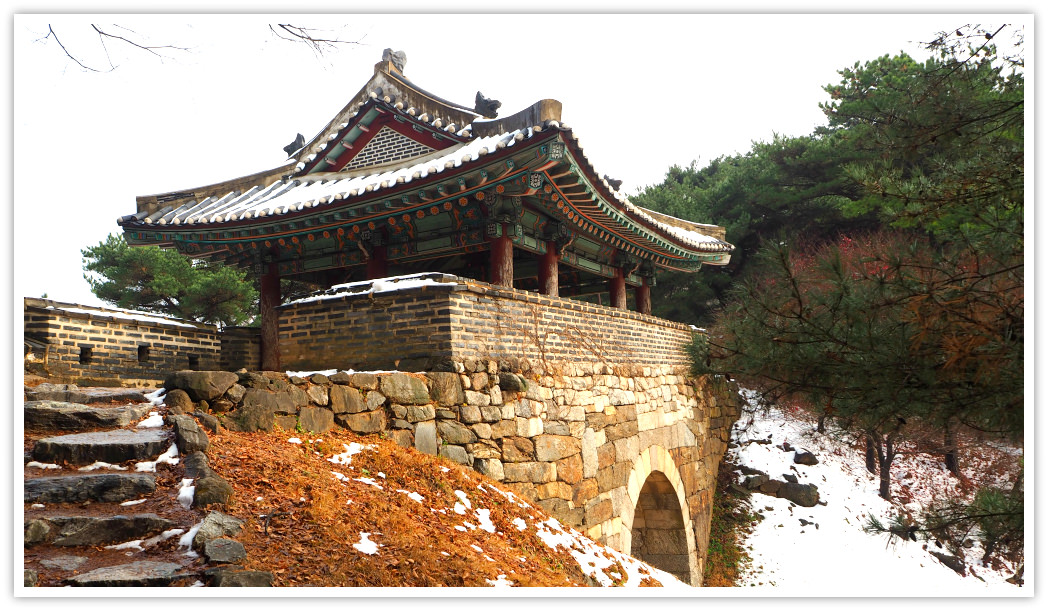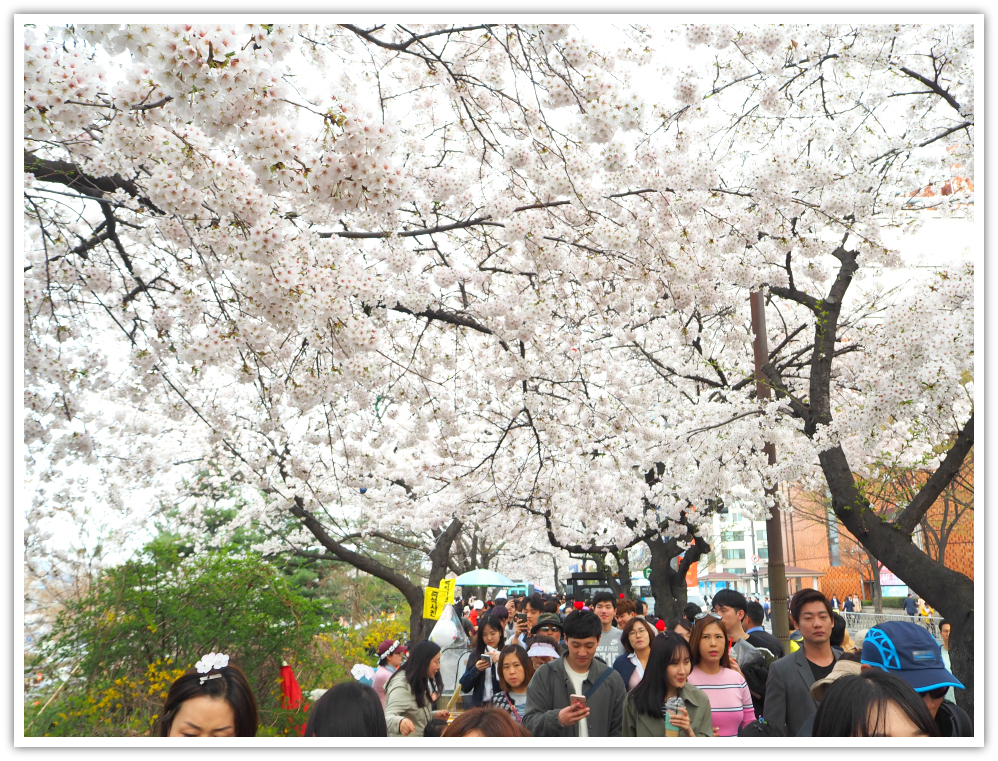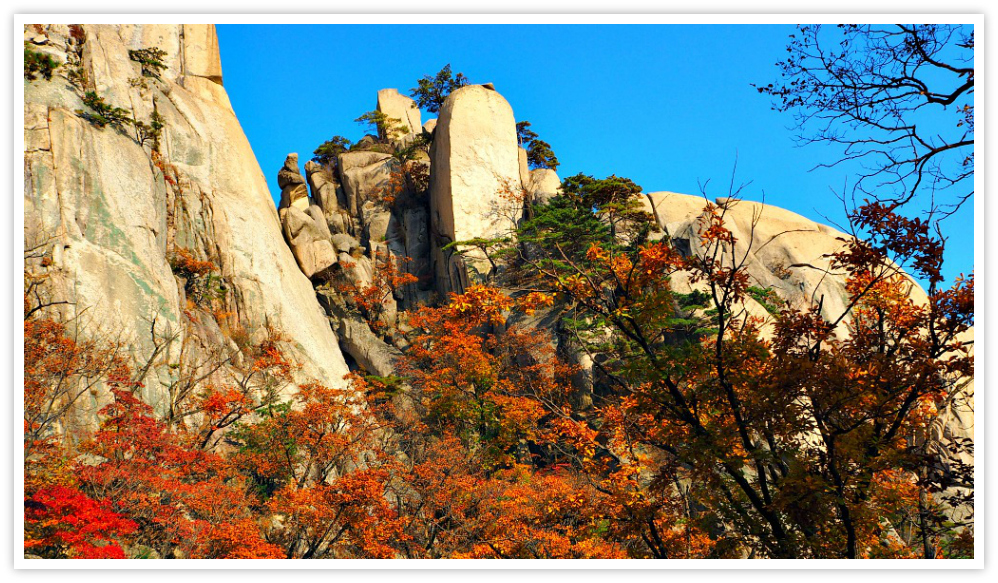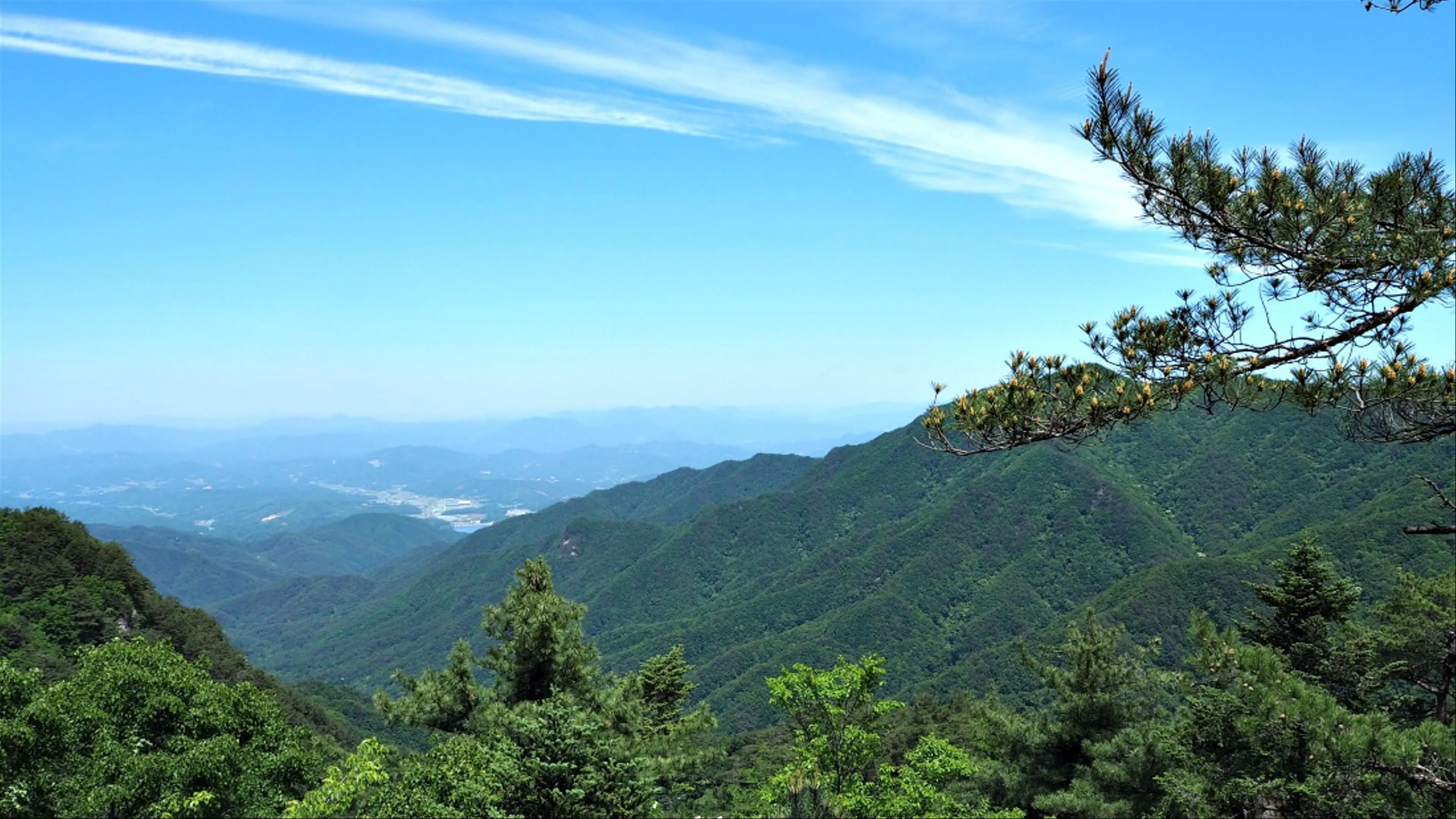You can travel anytime to South Korea and see lots of exciting things and experience exciting events and travel activities. However, depending on your preferences, particular seasons of the year may or may not work out well for you.
Therefore, as a quick guide, let me explain a bit about the four seasons and describe what you need to know for each season.
 Snow in Namhan Mountain Fortress, Gyeonggi Province
Snow in Namhan Mountain Fortress, Gyeonggi Province
From December to February
During this season, as you already know, the weather is cold and icy. This is not the preferred season for tourists from such environment. However, it is quite attractive for no-winter season (or no snow) country people.
Like myself, I had been dreaming of a white Christmas since I was little. It became a reality when I first came to Korea.
What I am saying is that many tropical country people, especially youngsters and middle-aged tourists want to see and experience the white snow. The snow is amazing and something mysterious, and it makes almost everybody see snow falling! Right?

From March to May
Yes, this is the ideal season to visit South Korea for most people. During the spring season, you will experience the refreshing cool air and somewhat warm and sunny days. Besides, you will see blue skies and with almost no white clouds at times.
Spring in Korea is ripe for sightseeing. The spring flowers, especially the Cherry Blossoms, are amazing! You will discover many places organizing Cherry Blossom Festivals.
In Seoul, the famous place for this festival is in the Yeouido area, by the Han River. This area is the center for events and festivities during the spring season. At times, amazing colorful fireworks competition are being held here.
 Colorful maple leaves at Dobongsan, Seoul
Colorful maple leaves at Dobongsan, Seoul
Autumn Season
September to November
These months belong to the autumn season in South Korea. This time of year, the temperature is perfect for all combined with the colorful leaves of the trees all over the country.
This is the best time to explore and hike mountains and forested areas. Locals and foreigners alike, love this season and never miss to see the maple trees metamorphose their leaves from green to yellowish, then slowly to pinkish, to reddish, and finally to brown colors.
With only such limited descriptions, they are not sufficient enough to paint this season that is considered the ‘queen of seasons.’

